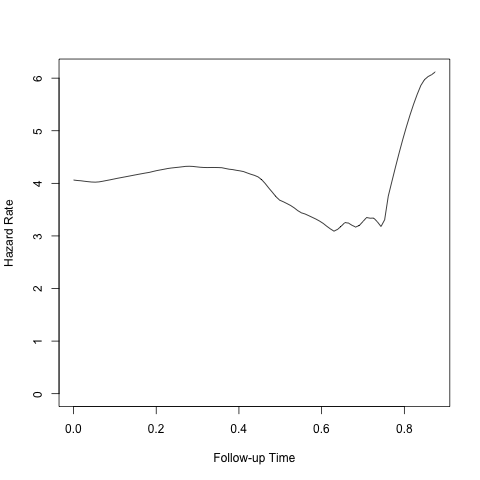library(muhaz)
nsam = 5000
time <- rexp(nsam,4)
cause0 = rbinom(nsam,1,.75)
haz = muhaz(time,cause0)
plot(haz)

I simulated failure time data which is exponentially distributed with parameter 4 and the proportion of non-censoring is 75%. Using 'muhaz' function, I expected that the estimate of hazard is close to 4 which is the exponential parameter regardless of censoring. But it is around 3 which seems to be 4 * 0.75. Since the censoring indicators were independently generated from the failure time data, I believe that the estimates of hazard should be constantly 4 regardless of the proportion of censoring.
Am I misunderstanding something or did something go wrong in muhaz function?


